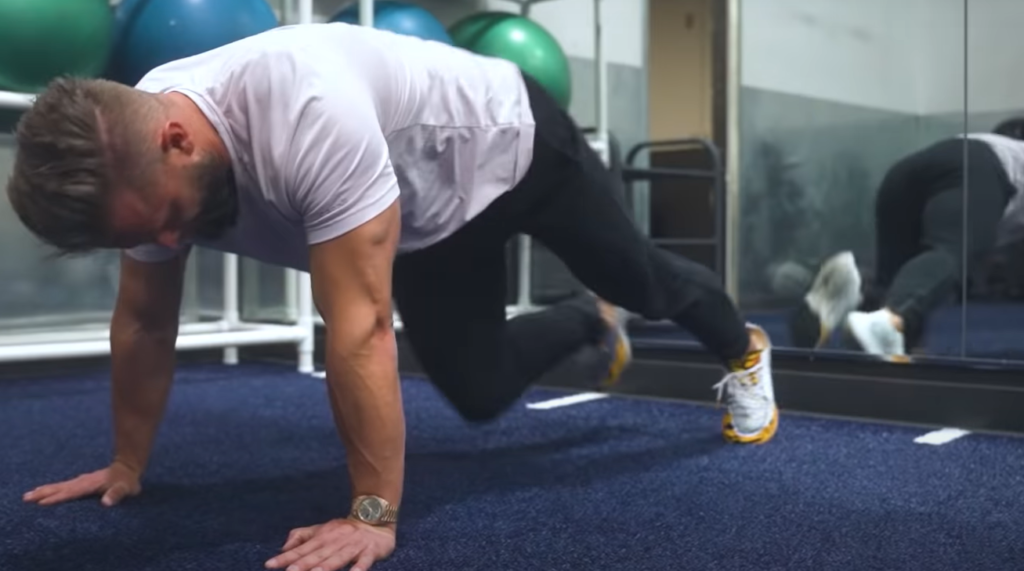When it comes to getting fit and healthy, there’s a lot of information out there. It can be difficult to know where to start. In this article, we will provide you with all the information you need to create a successful fitness program that meets your needs! We’ll cover everything from setting goals to choosing the right exercises. So whether you’re just starting out or you’ve been working out for years, read on for some helpful tips!
Assess your fitness level
The first step in creating a successful fitness program is to assess your fitness level. This will help you determine what types of activities are right for you and how often you should be doing them. There are a few different ways to assess your fitness level:
- By talking to your doctor or another healthcare professional
- By using a physical activity readiness questionnaire (PAR-Q)
- By taking a fitness test

Your doctor or healthcare professional can give you an idea of your general fitness level and any limitations you may have. They can also refer you to a PAR-Q if necessary. A PAR-Q is a short self-assessment tool that asks about your health history and current levels of physical activity.[1]
Design your fitness program
- Start with baby steps
- Choose the right exercises
- Get motivated
- Find a workout buddy
Setting fitness goals, it is important to be realistic. If you have never worked out before, starting with a goal of running a marathon may not be the best idea. Instead, focus on smaller goals that you can realistically achieve. For example, if your goal is to lose weight, start by setting a goal to lose five pounds in six weeks. Once you reach that goal, you can set another goal to lose ten pounds in eight weeks. And so on and so forth!
It is also important to design your fitness program based on your specific needs and goals. If you want to lose weight, then your program will be different than someone who wants to gain muscle. And if you have any medical conditions, be sure to consult with your doctor before beginning any new exercise program.
Consider your fitness goals
Create a balanced routine
Your fitness goals should be specific, measurable, attainable, relevant, and time-bound (SMART). Creating a routine that is well-rounded will help you not only achieve your fitness goals but maintain your results long term. A good routine should include cardiovascular exercise, strength training, and flexibility/mobility work.
If you are just starting out on your fitness journey, it can be helpful to consult with a certified personal trainer or coach to create a program that is tailored to your individual needs. They can also provide guidance and support to help you stay on track.[1]
Start low and progress slowly
If you are new to exercise, or it has been awhile since you have worked out regularly, it is important to start slowly and gradually increase your activity level. If you try to do too much too soon, you are more likely to get injured or burn out and give up on your fitness program altogether. A good rule of thumb is to start at a level that feels easy and comfortable, and then gradually increase the intensity, duration, and frequency of your workouts as your body becomes more fit.

Another important consideration when starting a new fitness program is to make sure that you are doing exercises that you enjoy.
Build activity into your daily routine
The first step in creating a successful fitness program is to build activity into your daily routine. You don’t have to go to the gym or run a marathon, but you do need to find ways to move your body every day. Taking a brisk walk in your neighborhood or playing with your kids at the park are great ways to get started.
If you’re not used to being active, start slowly and gradually increase the amount of time you’re active each day. Remember, even small changes can make a big difference in your overall health.
And speaking of overall health, that’s another important reason to create a fitness program. Regular physical activity can help reduce your risk of chronic diseases such as heart disease, stroke, and diabetes.[1]
Plan to include different activities
Your fitness program should include a variety of activities to help you stay motivated and interested. You might want to try different types of exercise classes, join a sports team, or go for hikes on the weekends.
It’s also important to find an activity that you enjoy so that you’re more likely to stick with it. If you hate going to the gym, chances are you won’t stick with your workout routine for very long. But if you find an activity that’s fun for you, like playing tennis or biking, then you’ll be more likely to keep up with it.[1]
Try high-interval intensity training
High-interval intensity training, or HIIT, is a type of exercise that alternates between short bursts of intense activity and brief periods of rest. HIIT can be used with any type of cardio equipment, such as a treadmill, elliptical trainer, rowing machine, or stationary bike.

HIIT workouts are effective because they keep your heart rate up during the entire workout. This means you’ll burn more calories in a shorter amount of time than you would if you did a traditional moderate-intensity workout.
The number of cycles depends on your fitness level and the amount of time you have to exercise.[1]Allow time for recovery
If you’re just starting out, your body will need time to recover from the new stresses you’re putting on it. Exercising too much or too hard can lead to injuries, so it’s important to listen to your body and give it the rest it needs.
Start with two or three days of exercise per week, and gradually increase as you get stronger and more fit. Remember to warm up before each workout, and cool down afterwards. And don’t forget to stretch!
Creating a successful fitness program is all about finding what works for you. So take your time, experiment, and most importantly, have fun! With a little effort and perseverance, you’ll be on your way to reaching your fitness.
Put it on paper
The first step to creating a successful fitness program is to put it on paper. This means that you need to sit down and write out your goals, what you want to achieve, and how you plan on achieving them. This will not only help to hold you accountable, but it will also help to keep you motivated.
After you have written out your goals, the next step is to create a schedule. You need to decide what days and times you are going to work out, and then stick to it. It is important to be consistent with your workout routine if you want to see results.
Assemble your equipment
This is the first and most important step in creating a successful fitness program. You need to have the right equipment to get the job done. The type of equipment you need will depend on your goals and objectives. If you’re trying to lose weight, you’ll need different equipment than if you’re trying to build muscle.
If you’re not sure what kind of equipment you need, consult with a professional trainer or coach. They can help you figure out what’s best for your individual needs.

Once you have your equipment, it’s time to start putting together your workout routine. Again, this will vary depending on your goals and objectives. But there are some basic principles that apply to all workout routines.
Get started
Break things up if you have to
One of the best ways to make sure you stick with your fitness program is to break it up into manageable chunks. If you’re trying to lose weight, for example, set a goal to lose five pounds in the next month rather than 20. Or if you want to start running, commit to running three times a week for 15 minutes instead of going all out every day.
Creating smaller goals will not only help you stay on track, but it will also give you a sense of accomplishment when you reach them. And as you start seeing results, you’ll be more motivated to keep going.
Be creative
The first step in creating a successful fitness program is to be creative. There are endless possibilities when it comes to fitness, so don’t be afraid to try something new. If you’re not sure where to start, consider hiring a personal trainer or joining a gym.
Another important step is to set realistic goals. It’s important to have an idea of what you want to achieve with your fitness program, and setting realistic goals will help you stay on track. Finally, make sure to stick with it! A successful fitness program requires dedication and commitment.[1]
Listen to your body
The first step to starting a successful fitness program is to listen to your body. If you have been inactive for a while, or if you have any health concerns, it’s important to check with your doctor before beginning a new exercise routine. Once you have the all-clear from your physician, it’s time to start paying attention to how your body feels during and after different types of activity.
There is no “right” way to workout, so it’s important to find an activity that you enjoy and that doesn’t cause pain. Many people find that low-impact activities like walking, swimming, or biking are good options when starting a new fitness program.[1]
Be flexible
You need to be flexible when it comes to your fitness program. If you’re the type of person who is always on the go, then you need to find a workout that can fit into your busy schedule. There are plenty of workouts that can be done in a short amount of time, so don’t feel like you have to commit to an hour-long session at the gym every day.[1]
Monitor your progress
The best way to stay motivated is to see results. That’s why it’s important to monitor your progress as you go along. There are a few different ways you can do this:
- Take measurements: This could include things like weight, body fat percentage, circumference measurements, or strength tests.
- Take progress photos: Sometimes the numbers don’t tell the whole story. Progress photos can be a great way to track changes in your body composition over time.
- Keep a training journal: Write down what exercises you did, how much weight you lifted, and how many reps and sets you did. This will not only help you track your progress, but it will also give you something to look.[1]
Safety First: Assessing Your Risk
No matter what your fitness goals are, safety should always be your number one priority.
This is especially important if you have any pre-existing medical conditions or injuries that could potentially be aggravated by physical activity. Once you have been cleared by your doctor, you can then begin to develop a workout routine that is tailored specifically for you.
Another important safety consideration is to make sure that you are using proper form and technique when performing all exercises. This will help reduce your risk of injury and ensure that you are getting the most out of each movement. If you are unsure about how to properly perform an exercise, there are plenty of resources available online or you can always seek out the help of a certified personal trainer.[2]
FAQ
What makes a fitness program successful?
There’s no one-size-fits-all answer to this question, as the definition of success varies from person to person. However, there are some common elements that are often cited as being important for a successful fitness program. These include setting realistic goals, choosing an appropriate exercise routine, being consistent with your workouts, and tracking your progress.
What is the first element you should set up when planning a workout plan?
The first element you should set up when planning a workout plan is your fitness goals. Without fitness goals, it will be difficult to create a successful program because you will not have a clear direction. You need to ask yourself what you want to achieve through your fitness program. Do you want to lose weight? Build muscle? Improve your cardiovascular health? Once you know what your goals are, you can start setting up a program that will help you achieve those goals.
Why is a fitness program important?
A fitness program is important because it helps you to become physically fit and healthy. It also helps you to lose weight, if that is your goal. Physical activity can help reduce your risk of developing heart disease, stroke, diabetes, cancer, and high blood pressure.
Exercise also helps improve mental health by reducing stress, anxiety, and depression. It can also increase self-esteem and confidence. Overall, a fitness program can improve your quality of life.
Useful Video: The single biggest reason why start-ups succeed | Bill Gross
Conclusion
Now that we’ve gone over the basics of creating a fitness program, it’s time to get started! Remember to tailor your program to your specific goals, and don’t be afraid to ask for help from a certified professional if you need it. With a little planning and effort, you’ll be on your way to achieving your fitness goals in no time. Thanks for reading!
References:
- https://www.mayoclinic.org/healthy-lifestyle/fitness/in-depth/fitness/art-20048269
- https://med.libretexts.org/Bookshelves/Health_and_Fitness/Book%3A_Concepts_of_Fitness_and_Wellness_(Flynn_et_al.)/02%3A_Fitness_Principles/2.04%3A_Creating_a_Successful_Fitness_Plan










Leave a Review